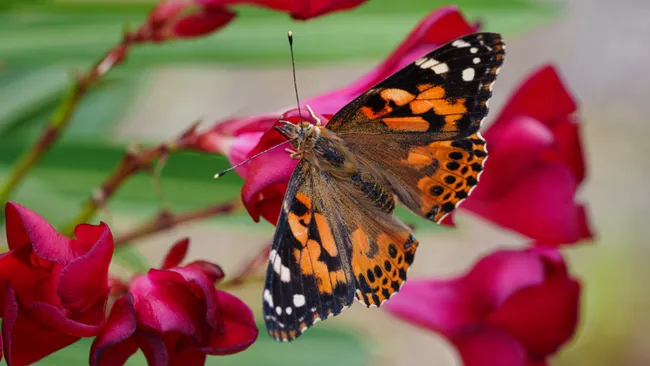Scientists have made a groundbreaking discovery: painted lady butterflies (Vanessa cardui) have undertaken an unprecedented journey across the Atlantic Ocean, spanning a staggering 2,600 miles (4,200 kilometers). This marks the first documented instance of insects crossing an entire ocean.
The discovery, led by Gerard Talavera, an evolutionary biologist at the Botanical Institute of Barcelona, began with observations in French Guiana in 2013. There, Talavera encountered a group of painted lady butterflies resting on the sand, their wings worn and punctured—an anomaly, as these butterflies are not native to South America but are found globally.
After a decade of research and collaboration, the team published their findings in Nature Communications on Tuesday (June 25). “We often view butterflies as symbols of delicate beauty, but this research demonstrates their remarkable capabilities,” said Roger Vila, a researcher at the Institute of Evolutionary Biology in Barcelona and co-author of the study. “There is still much to learn about their extraordinary feats.”
While insect migrations are not uncommon, tracking them poses significant challenges. The researchers employed a multifaceted approach, including genomic sequencing, pollen analysis from the butterflies’ bodies revealing African plant species, and isotopic analysis indicating a European origin.
Their findings conclusively ruled out North America as the butterflies’ starting point and pointed to a journey originating in Europe or Africa. “The painted lady butterflies undertook a journey of at least 4,200 km from West Africa to South America,” explained Clément Bataille, a professor at the University of Ottawa and co-author. “Their migration likely spanned over 7,000 km, possibly beginning in Europe and traversing three continents—an extraordinary feat for such small insects.”
Painted lady butterflies are known for migrating up to 9,000 miles (14,500 km) between Europe and Africa, typically making nightly stops for rest and refueling. However, the transatlantic journey required up to eight days of continuous flight, a challenge overcome by utilizing air currents that lift dust from the Sahara to the Americas.
“The butterflies navigated by gliding on these aerial pathways, conserving energy with minimal effort and utilizing ascending winds,” noted Eric Toro-Delgado, a doctoral student at the Institute of Evolutionary Biology and co-author. “Without these winds, their flight would have been limited to approximately 780 km before exhausting their energy reserves.”
This discovery underscores insects’ ability to undertake extensive migrations, potentially influencing ecosystems in ways previously underestimated. “It reveals new perspectives on insect dispersal over vast distances, including across seas and oceans,” Talavera emphasized. “Historically, migratory events have shaped species distributions as we observe them today.”
